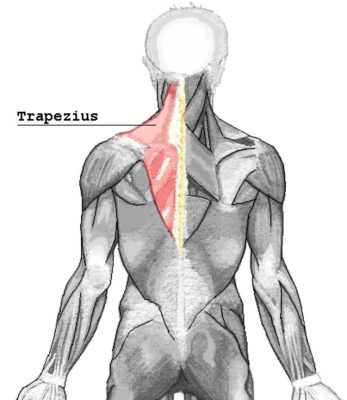Researchers say that computers can literally be a pain in the neck. In other words, certain body positions while working can lead to neck pain, headache, fatigue, and increased muscle tension. They can also lead to poor concentration, and over time, limited head rotation and injury of the vertebrae.
Sitting at a computer while jutting your head forward to look at the screen more closely, for example, is one of those ‘certain’ positions. Many of us do it without realizing that it compresses the neck.
A team of American and Dutch researchers carried out a study on people’s posture while working on a computer. They wrote about their findings in the journal Biofeedback (citation below).
Co-author, Erik Peper, a Professor of Holistic Health at San Francisco State University, said:
“When your posture is tall and erect, the muscles of your back can easily support the weight of your head and neck — as much as 12 pounds. But when your head juts forward at a 45 degree angle, your neck acts like a fulcrum, like a long lever lifting a heavy object.”
“Now the muscle weight of your head and neck is the equivalent of about 45 pounds. It is not surprising people get stiff necks and shoulder and back pain.”

Testing effects of neck and head positions
First test
The researchers asked 87 volunteer students to sit upright with their heads and necks properly aligned. They then asked them to turn their heads.
Next, the volunteers had to ‘scrunch’ their necks and stoop forward – in other words, jut their heads forward.
Most of the volunteers (92%) said they could turn their heads significantly farther when they hadn’t been scrunching.
Second test
In this test, 125 participants scrunched their necks for thirty seconds. The researchers also asked them to turn their heads.
Ninety-eight percent of them reported some pain in their eyes, head, or neck when turning their heads.
The team also monitored twelve participants with electromyography equipment.
They found that tension in the trapezius muscle tension increased when they scrunched and jutted their heads forward.

If you get headaches or neck pain
So, if computer work gives you backaches, neck pain, or headaches, check your posture. Make sure your head and the top of your neck are aligned. Imagine that an invisible thread from the ceiling is holding your head and neck in that straight position.
Prof. Peper said:
“You can do something about this poor posture very quickly.”
Purposefully replicating the neck-scrunched/head-forward position increases body awareness, Prof. Peper says.
Prof. Peper added:
“You can exaggerate the position and experience the symptoms. Then when you find yourself doing it, you can become aware and stop.”
The researchers also offer the following solutions to make the screen easier to read without having to strain:
- Wear computer reading glasses.
- Work with a larger font size.
- Get a stand and put your computer on it so that it is at eye level.
In a different study, British and Australian researchers said that less sitting time improves office employees’ well-being. It also improves their work engagement. The researchers urged office workers to ‘stand up for their health.’
Citation
“The Effect of Head and Neck Position on Head Rotation, Cervical Muscle Tension, and Symptoms,” Richard Harvey, Erik Peper, Annette Booiman, Alejandro Heredia, Cedillo, and Elizabeth Villagomez. Biofeedback, Volume 46, Issue 3, pp. 65–71. DOI: 10.5298/1081-5937-46.3.04.

